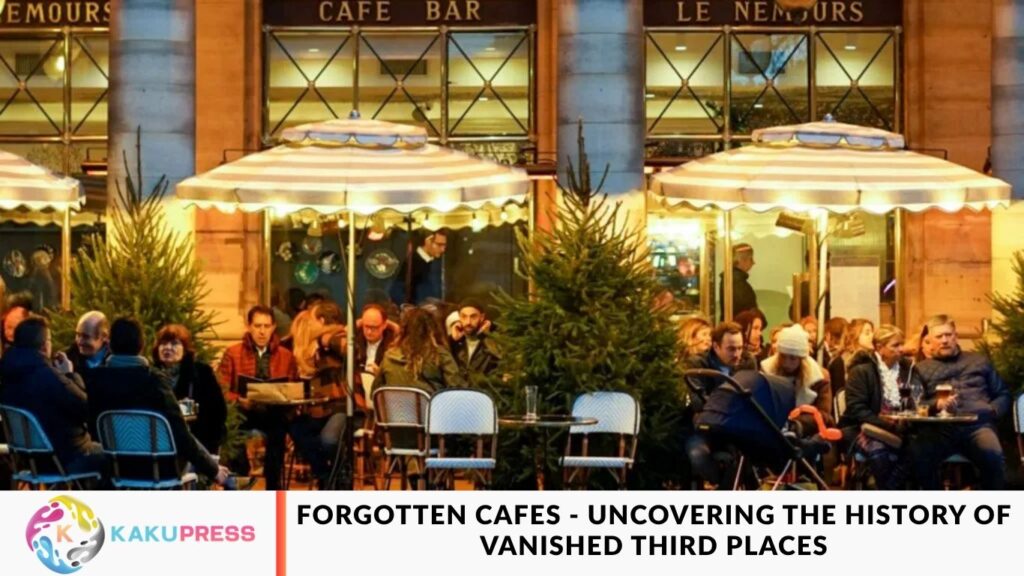Cafes have always been more than places to enjoy a cup of coffee—they have been essential “third places,” social hubs bridging the gap between home and work. These spaces fostered conversation, creativity, rebellion, and community, acting as vital stages for ideas and connection. Yet across the globe, countless once-thriving cafes have disappeared, leaving behind only faded signs, dusty chairs, and untold stories.
Cafes were hotbeds of intellectual and cultural activity. Parisian landmarks like Café de Flore and Les Deux Magots drew writers, artists, and revolutionaries. In Vienna, cafes buzzed with philosophical debates and musical discussions, shaping modern thought while offering affordable refuge and endless inspiration. While a few historic European cafes survive, many vanished due to war, gentrification, or evolving cultural trends.
In the United States during the 1950s and ’60s, independent cafes became sanctuaries for beat poets, jazz musicians, and civil rights activists. Establishments like San Francisco’s Vesuvio Cafe and New York’s Café Wha? were more than eateries—they were platforms for expression. Patrons gathered to enjoy poetry readings, folk music, and social debate. Rising rents and the growth of corporate coffee chains eventually pushed many of these artistic hubs into memory.
Cafes also played a critical role in post-colonial and immigrant communities. Cities like London and Toronto saw neighborhood cafes founded by immigrants, offering not only familiar food but a sense of belonging. These spaces preserved culture, language, and laughter, acting as safe havens for communities. As younger generations moved away or assimilated, many of these cafes closed, leaving rich histories largely undocumented.
Even in rural towns, small diners and cafes served as community anchors, where farmers, teachers, and travelers met and connected. Local economic decline, highway reroutes, and corporate franchises forced many of these social centers to shutter quietly, marking the loss of a town’s communal heart.
Forgotten cafes reveal more than the history of coffee—they showcase how humans connected in informal, inclusive spaces. The disappearance of these third places mirrors broader changes in society, work, and social interaction. As urban life modernizes and digital lifestyles dominate, the magic of spontaneous conversation, shared silence, and communal belonging risks vanishing.
Exploring the history of forgotten cafes is more than nostalgia—it’s a reminder of their vital role in shaping culture, identity, and human connection.
Frequently Asked Questions
What are “third places” in relation to cafes?
Third places are social spaces outside of home and work where people gather for conversation, creativity, and community. Cafes have historically served as key third places.
Why did many historic cafes disappear?
Many cafes vanished due to war, gentrification, economic shifts, rising rents, and the expansion of corporate coffee chains.
Which European cafes were famous intellectual hubs?
Parisian cafes like Café de Flore and Les Deux Magots, as well as Viennese coffeehouses, attracted writers, artists, and philosophers.
How did cafes influence cultural and social movements?
Cafes provided spaces for poetry readings, music performances, and political discussions, helping shape artistic and social movements across cities.
What role did cafes play in immigrant communities?
Cafes offered immigrants a sense of belonging, cultural preservation, and a safe space for social interaction in cities like London and Toronto.
Were cafes important in rural communities?
Yes, small diners and cafes in rural towns acted as community anchors, connecting farmers, teachers, and travelers before modern highways and urbanization changed local life.
Which American cafes were hubs for artists and activists?
In the 1950s–60s, San Francisco’s Vesuvio Cafe and New York’s Café Wha? were gathering spots for beat poets, jazz musicians, and civil rights advocates.
Conclusion
The story of forgotten cafes goes beyond coffee—it shows how humans sought connection, creativity, and community. These vanished third places shaped culture, nurtured ideas, and offered safe spaces. Though many disappeared due to gentrification, economic shifts, or modernization, their legacy reminds us to preserve community, culture, and human connection.

